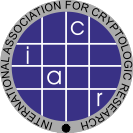Posters and Tutorials
Download the call for posters and tutorials in pdf format.
Tutorials
On Monday, September 25, there are two tutorials:Tim Güneysu: Post-Quantum Cryptography for Embedded Systems
Most of our currently used public-key cryptosystems (e.g., RSA or Elliptic Curve Cryptography) rely on the hardness of factorization or a variant of the discrete logarithm problem as trapdoor function. However, it is well-known that all those cryptosystems are broken as soon as sufficiently large quantum computers will become available. In particular for applications with the requirement for long-term security, it is essential to identify and realize viable replacements. In this context this talk highlights the challenges and latest achievements in the field of post-quantum cryptography in the context of embedded systems. This tutorial will put special emphasis on lattice-based and code-based cryptography but will also cover some aspects of hash-based cryptography.
Colin O'Flynn: Side Channel Live!
Side Channel Live! is a rapid-fire interactive tutorial using real hardware in the loop. Setup as a combination of a tutorial, capture the flag event, and hackathon it relies on your interaction to succeed. Side Channel Live! offers the chance for everyone to hone their skills on real devices, and hopefully learn a new trick or two. A short introduction to power analysis will be presented, followed by information on the trace data format (This is based on the CHES 2016 CTF, and will be documented before the event to save time by allowing participants to prepare any interface code they wish). A number of power traces will then be made available, ranging from basic unprotected implementations to hardware implementations and more. Participants can then attempt to break the devices - successful participants will have a chance to share a trick or two that they used on these devices. Hardware will also be setup if participants wish to generate new power traces: for example, testing a new masking implementation, or seeing the effect of adding noise or jitter to the power traces. Come equipped with a laptop if you plan to participate - ideally with Python installed, but traces will be readable in MATLAB and other languages. Side Channel Live! aims to bring together the large collective knowledge of CHES attendees in a hands-on environment, and informally exchange ideas and experiences in a manner that will expose more students, researchers, and engineers to side channel power analysis and what it can achieve.
Posters
The following posters will be presented in the CHES 2017 posters sessions:
-
Can a bit-serialized AES S-box be small?
Lauren De Meyer and Begul Bilgin
imec-COSIC, KU Leuven -
Constant-Time Higher-Order Boolean-to-Arithmetic Masking
Michael Hutter and Michael Tunstall
CRI/Rambus -
FPGA Optimization of AES and AES-like Ciphers for Authenticated Encryption
Mustafa Khairallah, Anupam Chattopadhyay and Thomas Peyrin
Nanyang Technological University, Singapore -
Simple Power Analysis on the Dummy based Hiding Countermeasures
Jong-Hyeok Lee, Yoo-Seung Won and Dong-Guk Han
Dept. of Financial Information Security, Kookmin University -
PPAP and iPPAP: PLL based Protection Against Physical attacks
Prasanna Ravi, Shivam Bhasin, Jakub Breier and Anupam Chattopadhyay
Temasek Labs, Nanyang Technological University, Singapore -
Lightweight Key Establishment in Wireless Sensor Networks
Carlos Andres Lara-Nino, Arturo Diaz-Perez and Miguel Morales-Sandoval
CINVESTAV Campus Tamaulipas -
VerTI: Verification Tool for Threshold Implementations
Victor Arribas, Svetla Nikova, Vincent Rijmen
imec-COSIC, KU Leuven -
Automated Fault Analysis of Assembly Code
Jakub Breier and Xiaolu Hou
Nanyang Technological University
